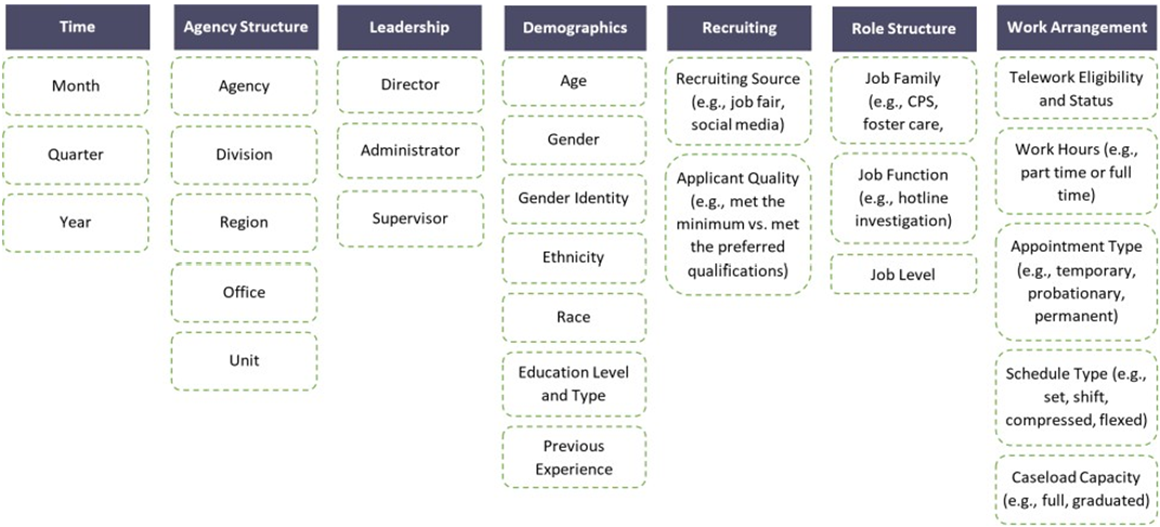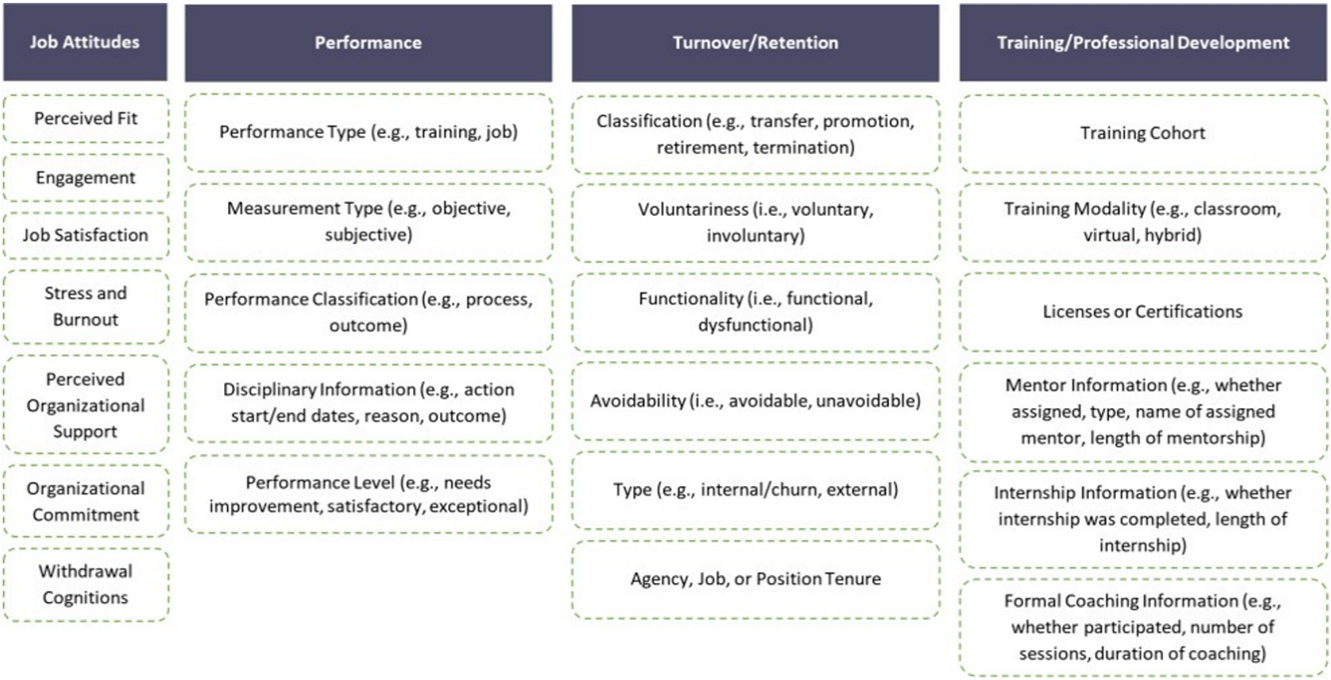Data Segmentation
Data segmentation is the process of breaking down “big” data into smaller, more meaningful groups, called segments. In the case of workforce data, each segment represents a group of people with similar characteristics, either that pertain to them as an individual (e.g., gender, race, educational background) or to their connection to the organization (e.g., their job title, supervisor, or work schedule).
There are a variety of ways to “slice and dice” your data into meaningful groups. Several possibilities are listed below, though you may think of others. The squares represent the unit of categorization (e.g., agency structure), and dashed green squares represent the data segments (e.g., region).


Data for a given workforce metric can be examined within segments (e.g., turnover within a specific agency office) or compared across segments (e.g., differences in turnover across different agency offices). For even finer detail, multiple segments can be examined at one time (e.g., turnover for each supervisor in each agency office). One requirement for segmentation is that there be a sufficient number of people in each segment for the findings to be meaningful. Though it might be enlightening to discover that there are only 1 or 2 people in a given segment, metrics or statistics with those data are likely to be problematic. Segments with very few people may need to be collapsed into a broader segment, assuming the broader segment has sufficient homogeneity and meaning (versus being a miscellaneous catchall group). Though there are a number of sophisticated software packages and analyses that can be used to segment data, Excel pivot tables can serve as a more accessible and user friendly option for some purposes.
Segmentation is a powerful means of drilling down in your data to pinpoint areas of strength and opportunity, identify underlying outliers or patterns, explore root causes of workforce issues, and employ workforce efforts more strategically and efficiently.
For more information on this topic, read our blog post.